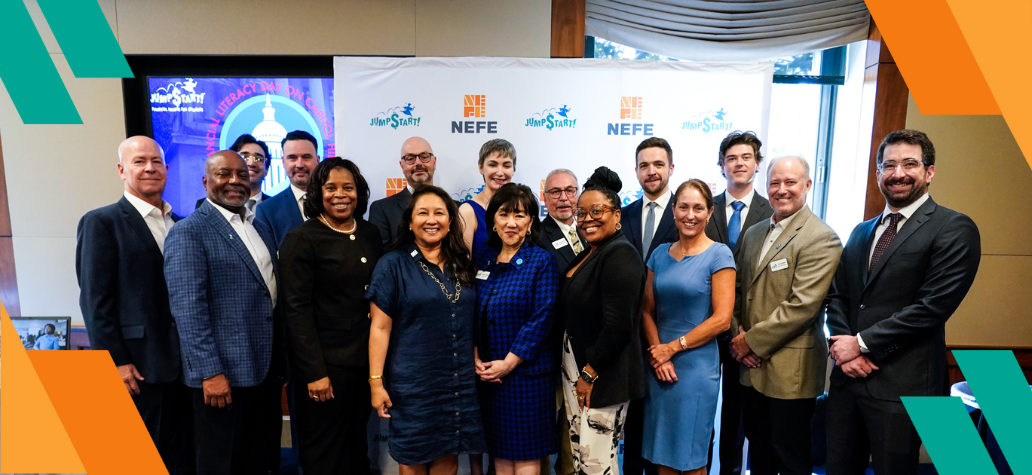In September 2020, the U.S. Department of the Treasury released the National Strategy 2020 on behalf of the Financial Literacy and Education Commission (FLEC). As part of NEFE’s What We’re Reading series, this post highlights key takeaways from the report for individuals or organizations that provide financial education or are keeping a pulse on the federal government's involvement in the field.
The U.S. National Strategy for Financial Literacy 2020 emphasizes financial education’s role as an essential tool for building and maintaining financially independent individuals, families and communities. The report notes that expanded financial education has not always been accompanied by rigor, quality and cost-effectiveness. In response to this, FLEC is focusing on assessing outcomes, measuring performance, deploying evidence-based best practices and advancing the field through a research and learning agenda. This strategy provides a snapshot of the federal government’s current priorities and role in supporting financial literacy efforts nationally.
What is FLEC?
The Financial Literacy and Education Commission (FLEC) is comprised of 22 federal agencies and the White House’s Domestic Policy Council. Created by Congress in 2003, the commission’s purpose is to, “coordinate the federal government’s financial literacy efforts and improve the financial education of all Americans.” FLEC released its first national strategy in 2006, and its most recent is the 2020 report.
Methods to Increase Financial Literacy and Education
FLEC conducted an extensive review of academic research and consulted with experts to determine best practices for increasing and improving financial education (p. 7). The first five best practices are the Consumer Financial Protection Bureau’s Five Principles for Effective Financial Education. The U.S. Department of the Treasury developed the last three in consultation with key stakeholders in the 2019 Best Practices for Financial Literacy and Education at Institutions of Higher Education report.
These best practices include:
- Know the individuals and families to be served.
- Provide actionable, relevant, and timely information.
- Improve key financial skills.
- Build on motivation.
- Make it easy to make good decisions and follow through.
- Raise standards for financial educators.
- Provide ongoing support.
- Evaluate for impact.
Review of Federal Activities
Based on a review of federal financial education activities, FLEC’s 2020 National Strategy includes a plan to improve coordination and clarity on the federal government’s role in financial education. This plan includes implementing a new structure for FLEC to conduct its work and use financial resources effectively.
In the 2020 National Strategy, FLEC identifies the primary role for the federal government in financial education – “to support, inform and improve the broader financial education field in its work to equip Americans with the skills, knowledge, and tools to improve their financial well-being.” (p. 10) FLEC agencies will do this through policy, research coordination and focused program and resource development.
FLEC’s new structure will consist of an executive committee and five working groups (p. 11) focused on:
- Basic financial capability
- Military
- Postsecondary education
- Housing counseling
- Retirement savings and investor education
This structure reflects FLEC’s role in coordinating financial education efforts at the federal level to avoid duplication and fragmentation. Its coordination efforts include promoting partnerships among governments (federal, state, tribal and local), nonprofit organizations and private enterprises.
FLEC’s report also outlines the commission’s goal of adopting common performance measures to better assess the effectiveness of financial education activities. The U.S. Department of the Treasury’s 2019 report states, “performance and outcome data have not been used systematically to assess the effectiveness of federal activities.” FLEC’s member agencies will work on identifying outcome measures to help make data-driven improvements in the future.
In addition to a focus on evaluation, FLEC also outlines that it will develop and promote a shared research and learning agenda that identifies priorities and goals for aligning federally supported research on financial literacy and education. FLEC working groups will develop this agenda in consultation with non-federal researchers and funders.
Going Forward
Visit FLEC’s website to stay up to date with their activities and resources or read the full U.S. National Strategy for Financial Literacy 2020. NEFE will continue to monitor and summarize the FLEC’s priorities for stakeholders.
About this Series
In the What We’re Reading series, NEFE reviews new publications in the research, practice, and policy domains of the Personal Finance Ecosystem. We provide summaries of these publications to inform stakeholders of new information and trends that may help guide their work.


